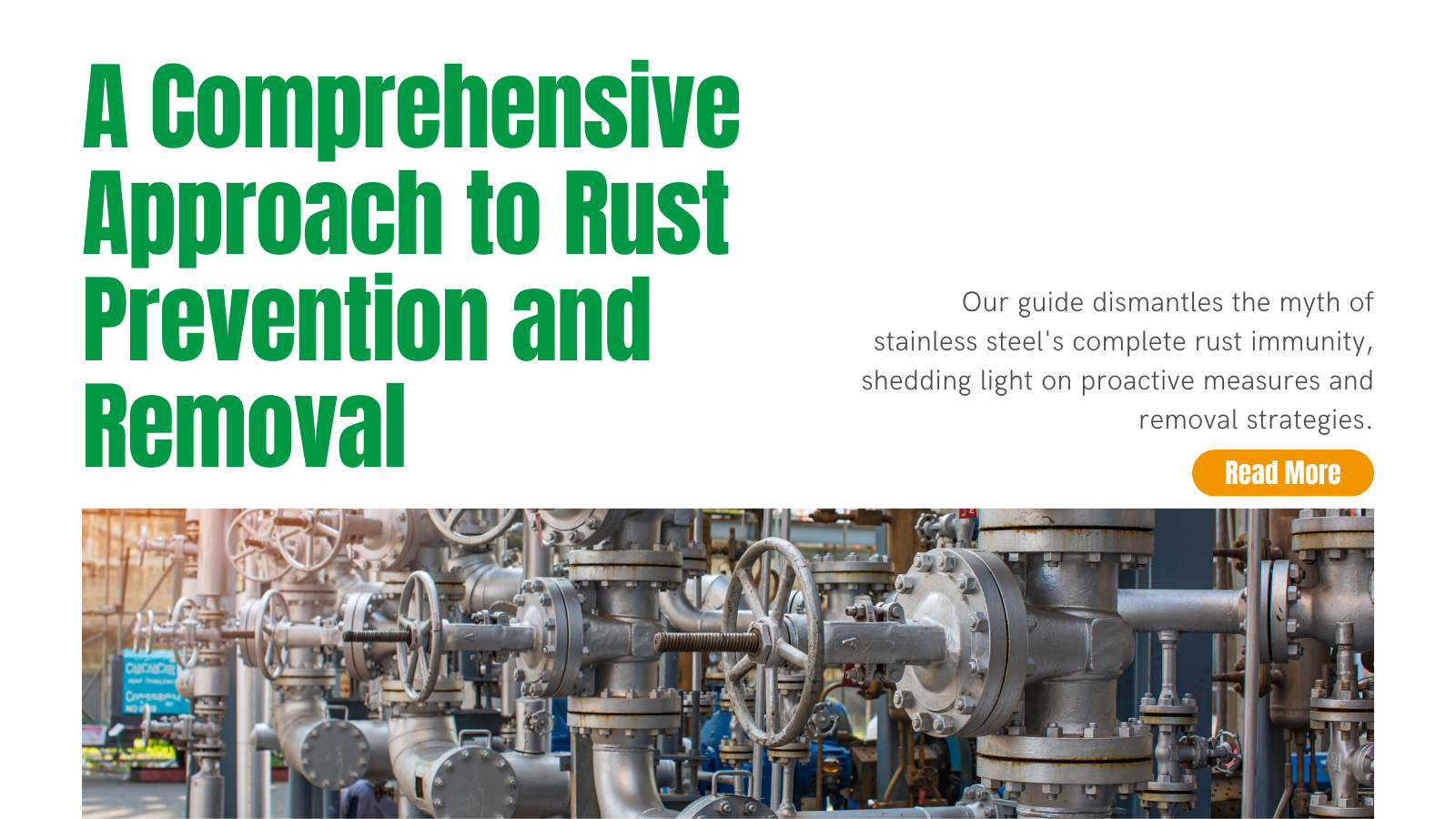Safeguarding Stainless Steel Excellence: A Comprehensive Approach to Rust Prevention and Removal

When it comes to stainless steel, the prevailing myth of imperviousness to rust often overshadows the reality. This comprehensive guide seeks to debunk this misconception, shedding light on effective maintenance practices and dispelling the notion that stainless steel is entirely rust-proof.
Unraveling the Mysteries of Stainless Steel Rust
Understanding the root cause is paramount. Stainless steel's corrosion resistance relies on a chromium oxide layer, whereas rust forms as ferrous oxide, lacking the uniformity of its chromium counterpart. Factors such as exposure to chloride-rich environments, physical damage, elevated temperatures, contact with chemicals, free iron contamination, and oxygen-depleted settings can compromise this protective layer.
Proactive Measures to Thwart Rust: Key Tips
-
Regular Cleaning Routines: Establishing consistent cleaning routines is foundational. Surface contaminants hinder the healing of the passivation layer. A gentle wash, incorporating warm water, a mild detergent, and a soft cloth, goes a long way in maintaining optimal layer conditions. Opting for stainless steel-friendly cleaners further enhances protection. -
Clean Weld Sites: The extreme temperatures associated with welding alter the color of stainless steel, signaling a compromised passivation layer. Post-weld cleaning, grinding, and passivation are integral steps to restore the steel's corrosion-resistant properties. -
Avoiding Abrasive Scrubs: The use of steel wool or metal pads in cleaning poses a risk of leaving microscopic iron deposits. This leads to reduced passivation effectiveness. Specialized techniques, such as electropolishing, may be necessary to eliminate free iron contamination.
Strategies for Rust Removal
In cases where rust has already manifested, swift yet meticulous action is essential:
-
Baking Soda Paste: For smaller affected areas, a paste made from baking soda and water can be applied. Gently scrubbing with a plastic scouring pad or cloth, followed by thorough rinsing, allows the passivation layer to recover. -
Oxalic Acid Cleaner: In instances of severe rust, cleaners containing oxalic acid prove effective. Adherence to safety guidelines and consultation of MSDS documentation is imperative. -
Electrolysis: Particularly potent for widespread rust or intricate shapes, electrolysis involves submerging the rusted part and a sacrificial ferrous metal in an electrolyte pool. Application of current transfers iron from rust to the scrap metal, ultimately restoring the surface.
A Holistic Recap
- Stainless steel, contrary to popular belief, can succumb to rust, necessitating vigilant prevention measures.
- Rust results from the compromise of the passivation layer.
- Consistent, gentle cleaning routines serve as the frontline defense against rust.
- Avoiding chlorides, strong acids, abrasives, and iron tools during maintenance is crucial.
- "Soft" scrubbing agents, such as baking soda, are effective for spot cleaning.
- Electrolysis emerges as a powerful solution for extensive rust or intricate parts.
- Despite effective rust removal, it's vital to acknowledge that the process can't fully restore lost stainless steel.
Connect with INOX-TEK for Stainless Steel Excellence
For projects involving stainless steel or concerns about rust, INOX-TEK, with over decades of industry experience, is poised to meet your unique needs. Reach out to explore tailored solutions crafted to your precise specifications.
